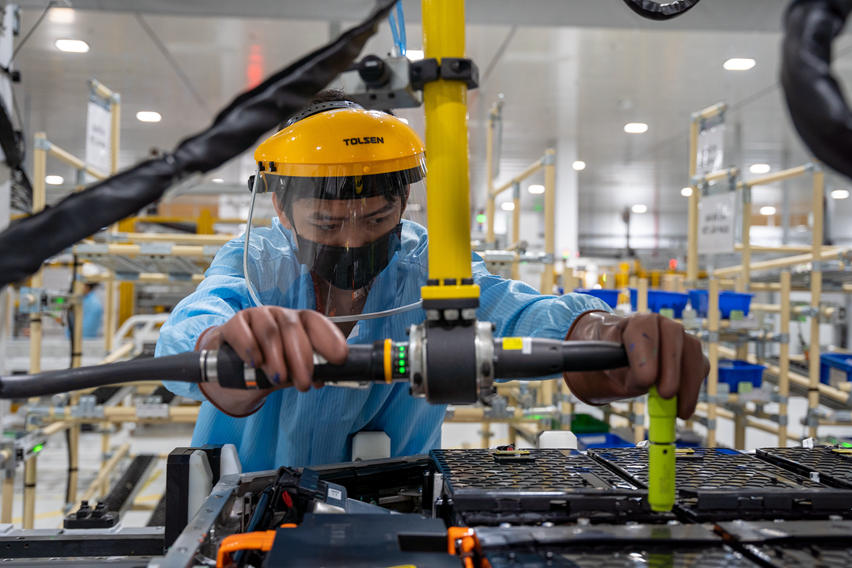
Lithium rechargeable batteries have become a popular power storage option in the contemporary period and are used to power a wide range of gadgets, including smart cars, cellphones, etc. These batteries owe their fame to their ability to store and release energy efficiently, making them indispensable in our fast-paced, technology-driven lives.
Brief Electrochemistry Of The Li-ion Battery
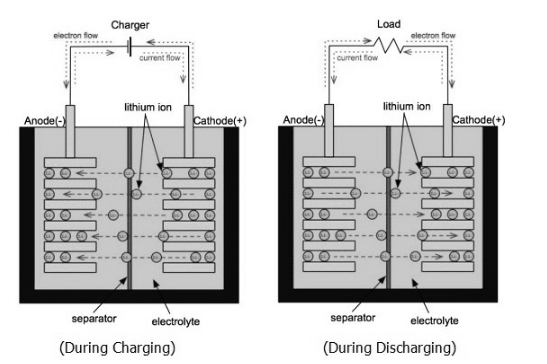
Image Link – www.rfwireless-world.com
At its core, the battery operates on the principle of lithium-ion movement between its positive and negative electrodes during charging and discharging cycles. Its main components consist of an anode (usually made of graphite), a cathode (commonly containing lithium cobalt oxide or other lithium-based compounds), and an electrolyte facilitating ion transport. During the charging process, lithium ions undergo migration from the cathode to the anode, and upon discharge, it reverts to the cathode once more.
Empower your future with the right choice of LiFePO4 batteries today! Before making your decision, familiarize yourself with its advantageous features while also staying mindful of the potential drawbacks.
In this article, we will analyze the advantages and disadvantages of lithium ion battery, highlighting its significance while considering limitations and environmental impacts.
Summary
ADVANTAGES |
DISADVANTAGES |
| High energy density | Limited lifespan |
| Low self-discharge rate | Safety concerns |
| Lightweight | Expensive to manufacture |
| Fast charging | Risk of thermal runaway |
| No memory effect | Environmental concerns |
| Wide application range | Limited availability |
| Low maintenance required | Sensitive to high temperatures |
Advantages Of Lithium Ion Battery
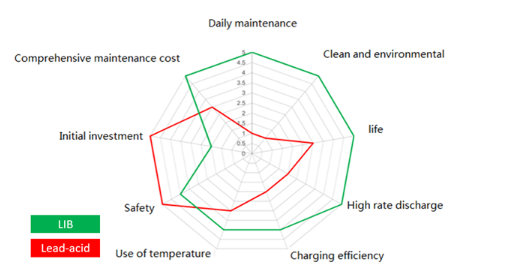
Image Link – www.sacredsun.com
Lithium cell technology has become a game-changer in various industries offering a range of advantages of lithium-ion batteries. By harnessing these cutting-edge batteries, we are propelling towards a more efficient and sustainable future, redefining how we power our devices and embracing the convenience and reliability this technology offer in our interconnected world.
1) Are lithium cell batteries characterized by a high energy density making them well-suited for electronic devices requiring extended runtimes?
Absolutely. The concept of energy density pertains to the quantity of energy that can be contained within a specific mass or volume of the battery. In contrast to other rechargeable battery technologies, for instance, nickel-cadmium (NiCad) or nickel-metal-hydride (NiMH) batteries, LiFePo4 batteries offer elevated energy densities. This means that for a given size and weight, lithium-ion batteries can store more energy allowing electronic devices to operate for longer periods before requiring recharging.
Due to the remarkable specific energy of lithium-ion batteries, it has become the top-notch choice for many portable electronic devices, including smartphones, laptops, tablets, cameras, and various other gadgets where extended battery life is paramount. Additionally, the lightweight nature of lithium-ion batteries adds to their popularity as it helps keep electronic devices portable and easy to carry around.
2) Are lithium batteries known for being relatively maintenance-free compared to other battery types, such as lead-acid?
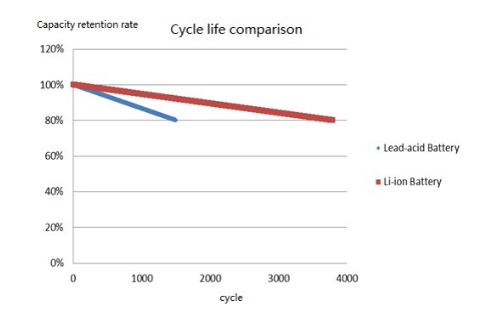
Image Link – www.sacredsun.com
The Li-ion rechargeable battery is generally known for being relatively maintenance-free compared to its traditional counterparts highlighting the advantages of lithium ion battery over lead acid. Here is a brief differentiation of the two battery types regarding maintenance and lifespan to explain this comparison.
Maintenance:
- Lithium-ion Batteries: These batteries do not have a “memory effect,” so there is no need for full discharge or conditioning to maintain their capacity. Additionally, it does not require periodic water topping-up or electrolyte level checks, which is common with lead-acid batteries. Users can charge and use them without concern for special maintenance routines.
- Lead-acid Batteries: These batteries, especially in their flooded lead-acid version, require regular maintenance. The water levels in the cells need to be checked regularly, and distilled water should be added if needed. The battery’s performance and lifespan can be negatively affected if the water levels are not maintained.
Additionally, lead-acid batteries may require occasional equalization charging or desulfation to keep them in good condition. Consequently, when comparing the maintenance requirements of lead-acid vs lithium batteries, it becomes evident that Li-ion batteries have the upper hand.
Lifespan:
- Lithium-ion Batteries: These batteries generally have a longer lifespan than lead-acid batteries, with their extended longevity being one of the key advantages of lead acid vs lithium ion batteries.
While the exact lifespan can vary depending on usage patterns and operating conditions, lithium ion batteries can typically last for about 2 to 10 years of regular use before their capacity significantly degrades. However, over time and with use, the capacity will gradually decline.
- Lead-acid Batteries: Lead-acid batteries’ lifespan is relatively shorter than lithium cell batteries. Flooded lead-acid batteries commonly found in car applications may last around 3-5 years on average. Maintenance-free lead-acid batteries (AGM or Gel) might have a slightly longer lifespan lasting up to 3-5 years in ideal conditions.
Li-ion rechargeable battery outshines lead-acid batteries with their maintenance-free operation showcasing the advantages of lithium ion battery over lead acid. Their extended lifespan and low maintenance requirements make them a superior choice for powering various devices and systems.
3) How do lithium-ion batteries’ fast charging capabilities contribute to their widespread use in modern electronic devices and electric vehicles?
The fast charging capabilities of LiFePO4 batteries have played a significant role in their widespread use in modern electronic devices and electric vehicles. Here are some key ways in which fast charging has contributed to their popularity:
- Convenience and Productivity: Fast charging significantly reduces the time it takes to recharge a device or vehicle, providing users with greater convenience and productivity. With shorter charging times, electronic devices such as smartphones, laptops, and tablets can quickly be returned to full power, allowing users to stay connected and productive without prolonged interruptions.
- Improved User Experience: Fast charging enhances the overall user experience by reducing downtime and ensuring that devices are readily available when needed. This is especially crucial for on-the-go professionals and individuals who rely heavily on their electronic gadgets throughout the day.
- Extended Device Usage: The ability to rapidly charge lithium-ion batteries allows electronic devices to operate for longer periods. Even a short charging session can provide enough power for several hours of use, which is particularly advantageous when access to electrical outlets is limited.
- Electric Vehicle Adoption: Fast charging has been a game-changer for electric vehicles (EVs). It addresses one of the major concerns for potential EV buyers – range anxiety. Faster charging times make EVs more practical for long-distance travel. Drivers can recharge their vehicles relatively quickly at fast-charging stations, similar to refueling a conventional vehicle at a gas station.
- Infrastructure Development: The demand for fast-charging capabilities has driven the expansion of charging infrastructure for portable devices and electric vehicles. As more charging stations become available, it promotes the widespread adoption of lithium-ion battery-powered devices and EVs.
4) Why are lithium batteries, particularly lithium cobalt-oxide, favored for portables due to improved energy density?
The lithium cell battery has revolutionized the portable device market with increased specific energy. This exceptional quality distinguishes them from other battery types, making them the preferred option for many uses requiring low power consumption and mobility.
- Lithium batteries normally have an energy density between 260 and 270 watt-hours per kilogram (wh/kg), while classic batteries typically have an energy density between 50 and 100 wh/kg. Because of this massive discrepancy in energy density, Li-ion batteries are generally considered the superior alternative for cutting-edge portable gadgets.
- Over the past decade, considerable progress has been made in advancing LiFePO4 cell battery technology, especially their chemistry. In order to optimize the battery’s electrochemistry and fine-tune important characteristics like energy density and power density, engineers have been experimenting with different materials for the anode and cathode.
- The lithium cobalt-oxide battery has the highest energy density of all the lithium-ion battery designs. The cathode of this battery is cobalt oxide, while the anode is graphite carbon. Lithium cobalt-oxide batteries are widely used in portable electronics that must keep running for long periods because of their high energy density. This includes cell phones, laptops, watches, and electric cars.
Disadvantages Of Lithium Ion Battery
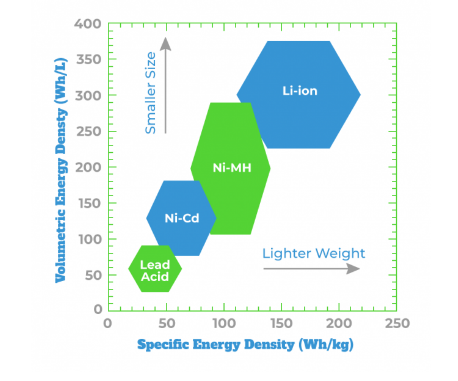
Image Link – www.dragonflyenergy.com
Lithium-ion batteries have undoubtedly brought numerous benefits to various industries but have drawbacks. Understanding the disadvantages of lithium-ion batteries is essential for making informed decisions regarding their use. Here, we will explore some of the key disadvantages and how it impacts various applications:
1) Compared to traditional battery types like nickel-cadmium, do lithium-ion batteries entail higher manufacturing costs?
Compared to traditional battery types like nickel-cadmium (NiCad) batteries, LiFePO4 cell batteries generally entail higher manufacturing costs. Several factors contribute to this cost difference.
- Materials: Lithium-ion batteries require specific materials, including lithium compounds, cobalt, nickel, and other elements for the cathode, anode, and electrolyte. Some of these materials can be relatively expensive, especially those used in high-energy-density lithium-ion batteries like lithium cobalt oxide. In contrast, nickel-cadmium batteries use less expensive materials such as nickel and cadmium.
- Manufacturing Complexity: The manufacturing process for lithium-ion batteries is more complex compared to nickel-cadmium batteries. The fabrication and assembly of lithium-ion cells require precise and controlled conditions to ensure safety and performance. This complexity contributes to increased production costs.
- Safety Measures: Lithium batteries require additional safety measures to prevent overcharging, overheating, and potential thermal runaway events. Safety features like battery management systems add to the overall manufacturing cost.
Despite the higher initial manufacturing costs, lithium-ion batteries have gained popularity due to their numerous advantages, including higher energy density, longer lifespan, and lower weight.
2) Do thermal runaway and overheating negatively impact the performance and reliability of lithium-ion batteries?
Thermal Runaway and Overheating can have detrimental effects on the performance and reliability of lithium-ion batteries. Here are three key points to consider:
- Reduced Performance: Thermal runaway is a self-sustaining uncontrollable increase in temperature that can occur in a lithium-ion battery. This can lead to irreversible damage to the battery’s internal components resulting in reduced performance and a decline in the battery’s capacity. Frequent exposure to high temperatures can also accelerate the breakdown of the battery’s active materials, further contributing to decreased performance over time.
- Cycle Life Degradation: Even if it doesn’t lead to thermal runaway, overheating can still cause thermal stress within the battery. Repeated heating and cooling cycles can lead to mechanical damage and structural changes, resulting in a reduced cycle life for the battery. These factors lead to mechanical damage and structural changes in the battery, reducing cycle life. On average, a well-maintained lithium-ion battery can endure approximately 300 to 500 charge-discharge cycles before experiencing significant capacity loss.
- High-Temperature Exposure: Frequent exposure to high temperatures, such as those exceeding 40°C (104°F), can accelerate the breakdown of the battery’s active materials. This, in turn, exacerbates performance deterioration over time.
To ensure the performance and reliability of lithium-ion batteries, it is crucial to avoid exposing them to extreme temperatures and to follow manufacturer guidelines for charging, usage, and storage.
3) Do lithium batteries experience performance degradation when exposed to extremely cold weather conditions?
Lithium-ion batteries can experience performance degradation when exposed to extremely cold temperatures. There are a number of concerns that might arise from the battery’s performance if it is exposed to cold temperatures, including:
- Reduced Capacity: The lithium-ion battery’s capacity to hold a charge decreases in cold temperatures. The decrease in capacity can be significant, with a typical drop of approximately 20-30% at freezing temperatures (0°C or 32°F) and even more at extremely cold temperatures. As a result, the battery’s energy output is reduced, and it runs for a shorter duration before necessitating recharging.
- Slower Charging: Because chemical processes in a battery slow down when it’s cold, it may make charging take longer. Charging times may be prolonged, especially when using fast-charging methods.
- Impact Of Temperature On Internal Resistance: When exposed to colder conditions, the battery experiences an increase in internal resistance, leading to a rise in impedance. This higher resistance can cause the battery to heat up during use leading to inefficiencies and reduced power output.
- Voltage Fluctuations: The voltage of a lithium-ion battery can fluctuate more in cold temperatures making it difficult for devices to gauge the remaining battery life accurately. The voltage fluctuations can cause up to 10-15% deviations from the battery’s true capacity. This can lead to unreliable battery level readings.
- Reduced Performance In High-Drain Applications: In high-drain applications like electric vehicles, extremely cold temperatures can significantly reduce the battery’s ability to deliver the required power, impacting vehicle range and performance.
Storing and using them within recommended temperature ranges is essential to mitigate the effects of cold temperatures on lithium-ion batteries. Overall, being mindful of temperature conditions and handling lithium-ion batteries with care during extreme cold can help preserve their performance and extend their lifespan.
Takeaway: The Power and Pitfalls of Lithium-ion Batteries
In a nutshell, LiFePO4 batteries stand out as a powerhouse solution perfectly suited for electronic devices requiring long-lasting performance. These compact and efficient batteries have become the go-to choice for extended runtimes and increased portability. While considering the advantages and disadvantages of lithium ion battery, navigating the challenges is crucial.
As technology advances, addressing these pitfalls becomes vital for their sustained success. Embracing the power of lithium-ion batteries opens doors to a more connected and productive future where innovation and responsible practices pave the way for greater convenience and reliability in our technology-driven lives.


